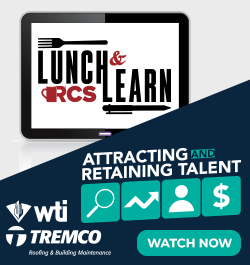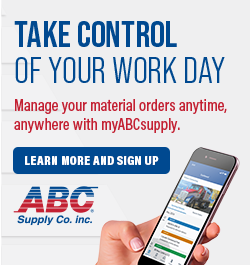Rescue Planning as Part of Your Fall Protection

By John Kenney, Cotney Consulting Group.
Learn more about the importance of fall protection rescue plans and how to implement them.
Falls are among the most common workplace injuries in our industry year after year. Rescue plans are often overlooked as fall protection components, but rescue plans are necessary for Roofing Contractors.
Calling 911 can not be considered a good rescue plan. First responders who arrive on the scene may not have the right equipment to save someone at a certain height or a particular scenario, and they may take too long to come onsite and rescue the fallen worker.
OSHA General Industry Standard 1910.140(c)(21) requires employers to provide prompt rescue for each employee in the event of a fall. And OSHA Construction Standard 1926.502(d)(20) requires that employers provide prompt rescue of employees in the event of a fall or assure that employees can rescue themselves. While OSHA does not clarify what “prompt rescue” equates to in time, the American National Standards Institute addresses rescue in greater detail, recommending that verbal or physical contact with the victim occurs within four to six minutes, and the effects of suspension trauma can occur in less than 30 minutes.
OSHA General Industry Standard 1910.30(a)(1) requires that before an “employee is exposed to a fall hazard, the employer must provide training for each employee who uses personal fall protection systems or who is required to be trained.” It is a requirement, but it also prepares your employees to implement rescue protocol and, more importantly, how to use the rescue equipment.
Training should always be an essential part of your safety preparation throughout your company; it provides work environments that help ensure employees make it home safe every night. During your training sessions, explain to your employees how important it is to remain calm. Emphasize that you have a fall rescue plan and assure them that they will be rescued as quickly as possible.
Remember, when an incident occurs, every second will count. Having pre-established guidelines is needed to perform the correct actions fast and not waste time. As stated before, emergency services don’t always have the experience or equipment, and this will cause delays.
Rescue plans will vary from project to project and even within the same job site. Please make sure everyone on the roof understands how to rescue their fellow roofers. To help assist you in this process, please download our fall rescue checklist and guide below:
Fall Rescue Checklist Guide Sheet
About John Kenney
John Kenney is the Chief Executive Officer at Cotney Consulting Group. Prior to starting Cotney, John had 45 years of experience in the construction industry. John began his career by working as a roofing apprentice at a family business in the Northeast. Because of his skill and hard work, he progressed from roofing laborer to foreman, estimator, chief estimator, Vice President, and Chief Operating Officer with his various companies. John has worked for multiple Top 100 Roofing Contractors and is intimately familiar with all aspects of roofing production, estimating, and operations. In his last role, John was responsible for the daily operations and performance of a large commercial roofing contractor. During his tenure, John ran business units associated with delivering excellent workmanship and unparalleled customer service while ensuring healthy net profits for his company.























Comments
Leave a Reply
Have an account? Login to leave a comment!
Sign In